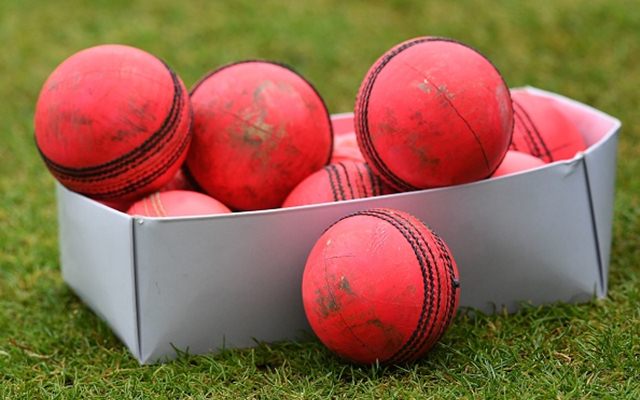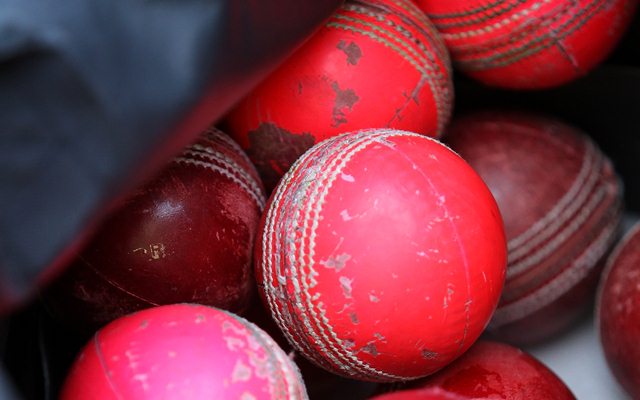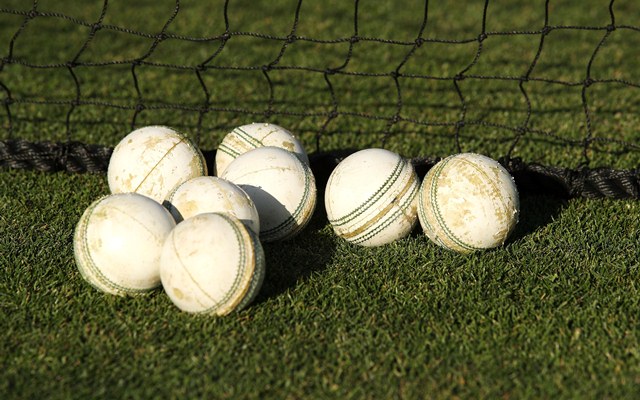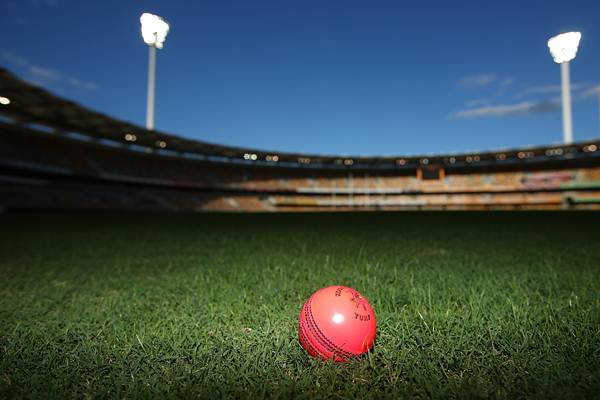Explained: Types of balls used in international cricket
Here's a deep dive into the history and use of the red, pink and white cricket balls.
5 Min Read


Cricket has been played for centuries now and as the game has evolved, so has the equipment with which it is been played. There are many factors that play a role in shaping a cricket match. One of the major factors is the pitch, the 22-yard strip on which the cricket matches are played. Another factor is the ball because if you think about it, a lot depends on the interaction between the ball and the surface of the pitch.
Having said that, there are certain varieties of cricket balls that are in use today at the international level. There are mainly three types of balls when it comes to differentiating them in terms of their colour. But the behaviour of certain cricket balls can also vary depending on their manufacturers.
The cricket ball is an essential tool of the game and the talks around it are once again on the rise, with India and Australia set to battle out in the World Test Championship final at the Oval in London from June 7. The International Cricker Council (ICC) has confirmed that the affair will be played with a Dukes ball.
In this article, we wdiscuss these different balls, categorically in relation to the colour:
1. Red ball

The red ball is the oldest colour of cricket balls, which is still being used. A traditional cricket ball was always supposed to be red until there came a need to have cricket even during the night time (more on that later). Having said that, the ‘red cherry’ is used in Test matches and first-class matches across the globe, but not the same manufacturer is used.
For the matches in England and West Indies, a ball manufactured by Dukes is used. The shade of red on this ball is slightly darker and the ball is specifically made to suit the conditions in England. This ball swings until about the 50th over and also the seam remains upright even after several overs. This is why the red ball in England seams well through the 80 overs of its use.
Then there is the Kookaburra ball, which is used for Test matches in Australia, New Zealand, Sri Lanka, South Africa, Bangladesh, Zimbabwe and Pakistan. These balls have been used in international cricket for more than 70 years now. The ball tends to swing until the first 30 overs and after that, it starts becoming easier for the batsmen to play their shots.
There is one last type of ball which is used only in India for Test matches, that is SG (Sanspareils Greenlands). These balls have been in use in international cricket since the early 90s. The wider seam allows the spinners to grip the ball more, making it ideal for spinning conditions. It also allows the reverse swing to come into play after the initial 30 overs as well.
2. White ball

White balls are used in one-day matches, which means limited-overs games with coloured clothing. Introduced by Kerry Packer in 1977, the revolutionary Australian tycoon, who envisioned what we now see as day-night cricket matches,, the white balls have a history of their own. Using a different colour ball other than red was first discussed in the 1930s, but it was used for the first time in the late 70s, with the world series cricket.
The white ball was chosen because it was going to be difficult for the batters to see the red ball under the floodlights with players in coloured clothing. However, once they started using the white ball, it was understood that it offers a lot more swing in the early stages of the match, but can deteriorate very rapidly, unlike the red ball.
To deal with these issues, during the 1992 and 1996 World Cup, two new balls were used from both bowling ends separately. This ensured that the ball did not deteriorate. However, for the matches apart from the two events, only one ball was used for the entire 50 overs, until the umpires felt it should be changed. Between 2007 and 2012, a reconditioned ball, which was neither new nor too old, was used after the 34-over mark.
Since 2012, two balls are used from either end in each innings, which means that the ball which a batsman is facing in the 46th over is used for only 23 overs. Having said that, all the balls used in white-ball cricket internationally use Kookaburra balls, which were the original manufacturers of the white ball. During the 1999 Cricket World Cup in England, a special Dukes white ball was used, but it was found that it swung way too much. Since then, it was not used.
3. Pink ball

In the 2000s, the pink ball was developed so that first-class and Test matches can be played under lights, as white balls could not have been used for this purpose as they would deteriorate quickly and would not last for 80 overs. Additionally, with players wearing white coloured clothing, it would be difficult to spot it as well
Red balls were rejected for using under lights quite before. This is when world cricket got together to develop a solution. Some other colours such as yellow and orange were used, but the pink ball was found to be the best for the day-night matches. Kookaburra once again stepped in as the leading manufacturer for matches in Australia and other places, where it already produced red balls.
India used SG balls for the first day-night Test in the country in 2019. England too used Dukes' pink ball for their day-night Tests. There is a lot that is yet to be understood when it comes to the behaviour of the pink ball. Notably, during India and England day-night Test in Ahmedabad, the first exhibition of quality spin bowling with pink ball was witnessed, while the ball was always believed to be only seam and swing friendly.
Download Our App